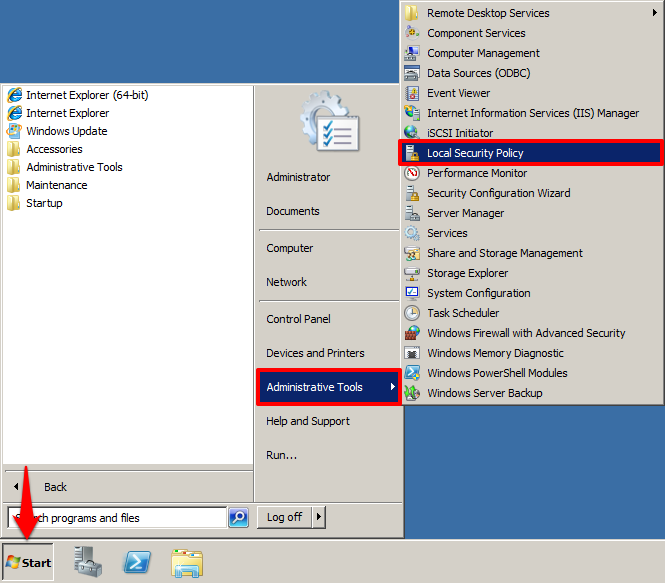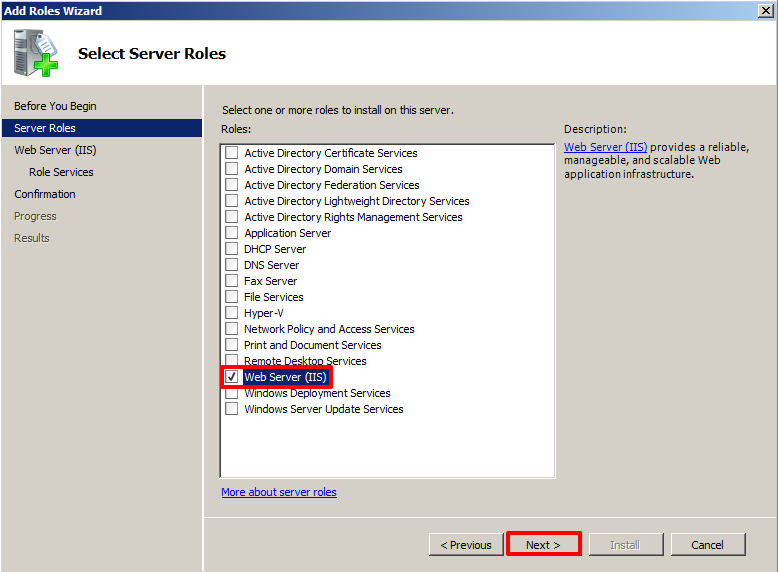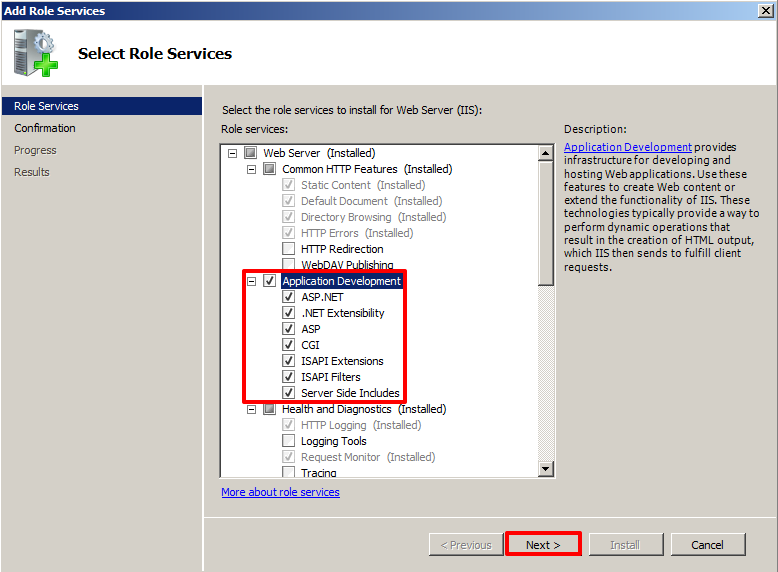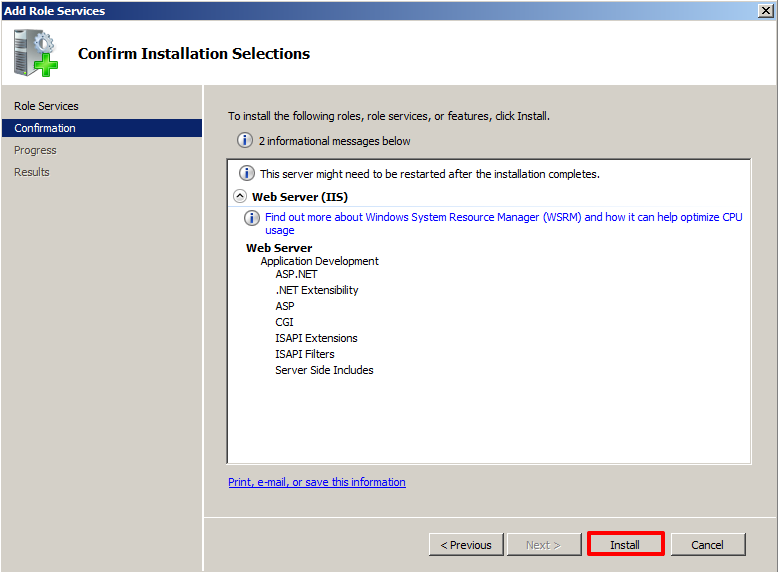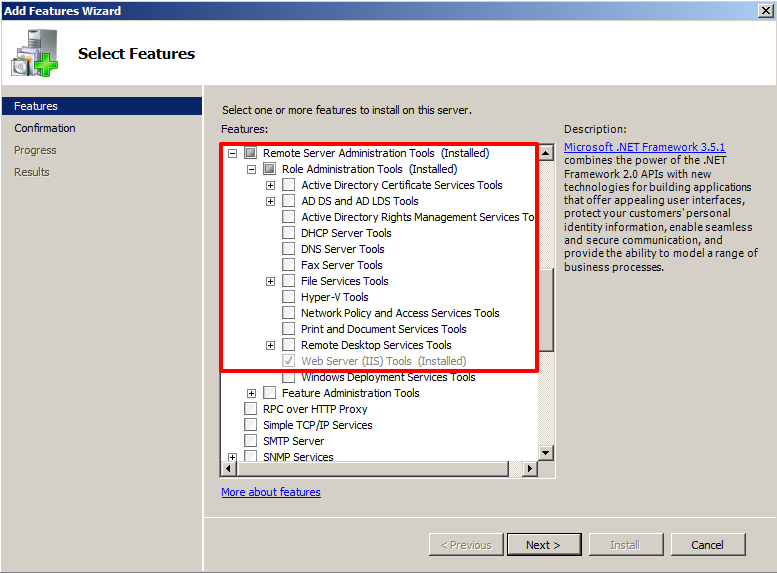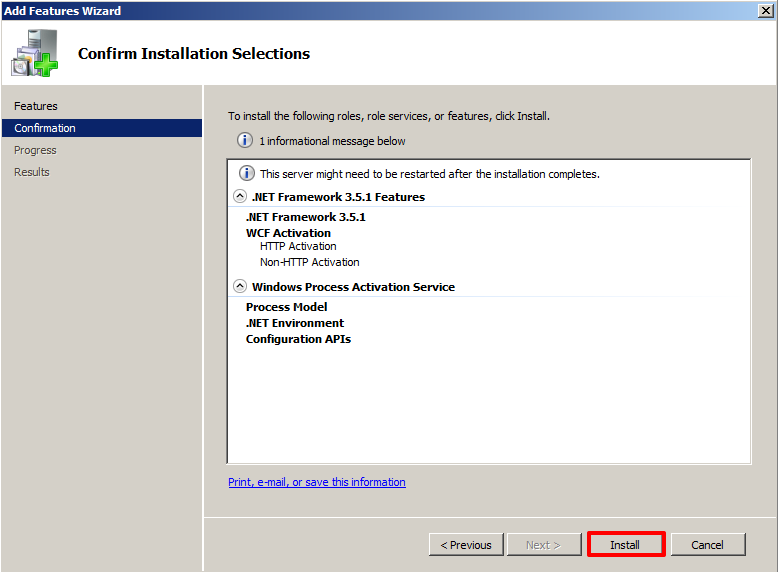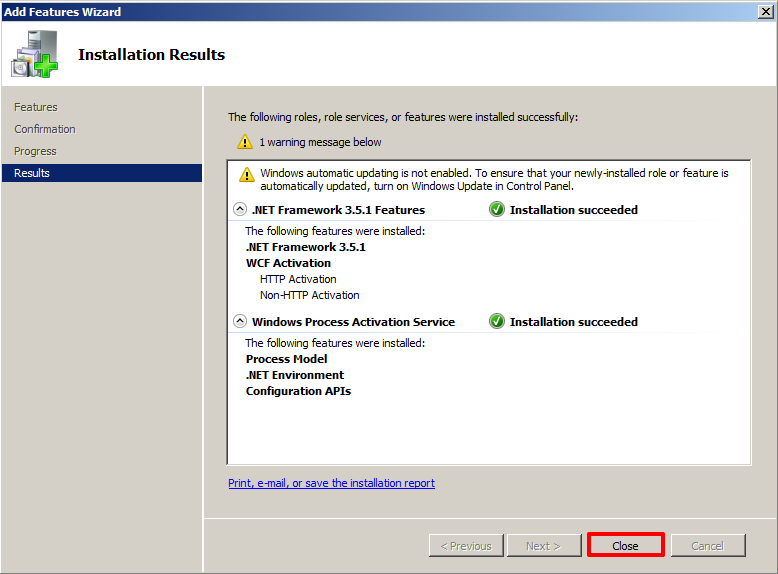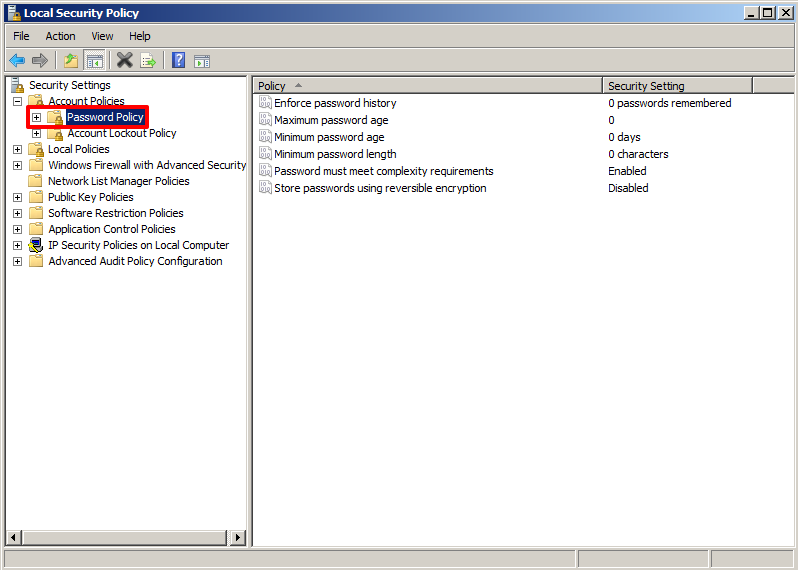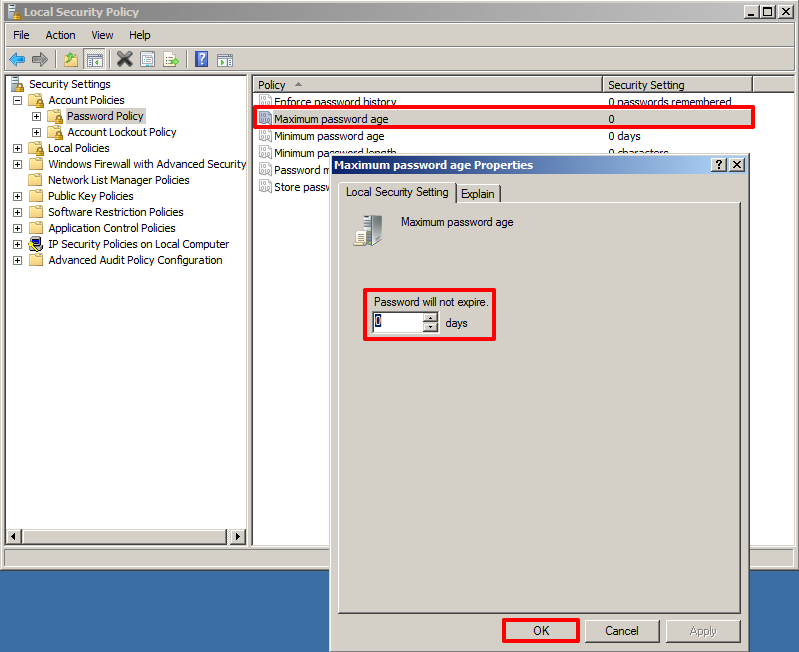Configuring Windows Server 2008 for SmartHub ASE
Introduction
The steps in this guide will help you prepare the various resources and configurations needed for your SmartHub ASE deployment. The goal is to configure the Windows Server 2008 settings as summarized in the table below:
| Roles | Features | Local Security Policy |
|---|---|---|
| Web Server (IIS), IIS Role Services | Remote Server Administration Tools, Role Administration Tools, Web Server (IIS) Tools | Account Policies, Password Policy, Password must meet complexity requirements = Disabled, Maximum password age = 0 |
| ASP.Net | Windows Process Activation Service, Process Model.Net Environment, Configuration APIs | |
| .Net extensibility, ASP, CGI, ISAPI Extensions, ISAPI Filters | .Net Framework 3.5.1 Features, .Net Framework 3.5.1, WCF Activation, HTTP Activation, Non-HTTP Activation |
Adding Web Server (IIS) Roles
Step 1
Click on the Server Manager icon from the quick launch toolbar (or alternatively you may select it from the Windows Start menu from the Administrative Tools).

Step 2
To add Web Server (IIS) Roles, select the Roles node from the left panel in the Server Manager tree. Proceed by clicking on Add Roles in the main Roles pane.

Step 6
At the Select Role Services screen, keep the default selections (do not make any additions or changes). Click Next to continue.

Step 7
At the Confirm Installation Selections screen, click Install to begin the installation process.

Step 8
Once the roles have been installed, you will be presented with the Installation Results. Click Close to exit the wizard.
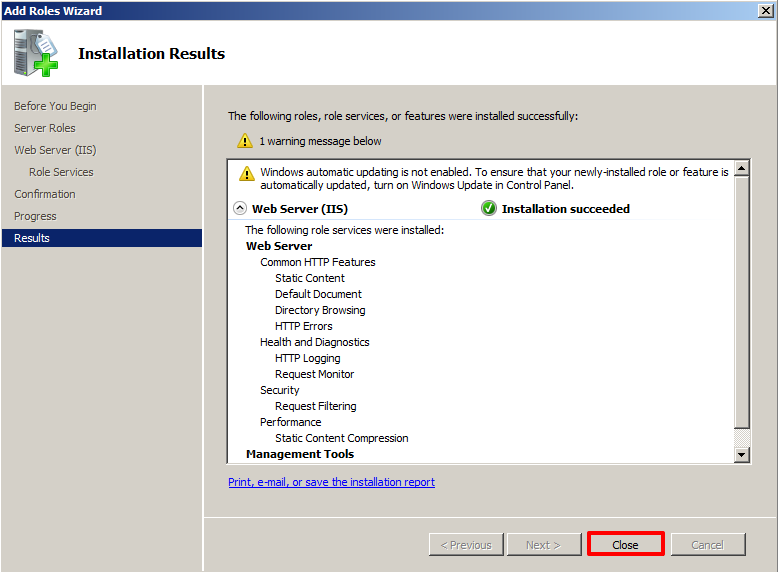
Step 9
Once the Web Server (IIS) roles have been installed, return to the Server Manager. In the main pane, scroll down in the Role Services section and you should see a listing of all installed services. The following list of services must be installed:
- ASP.Net
- .Net extensibility
- ASP
- CGI
- ISAPI Extensions
- ISAPI Filters
- Server Side Includes
Some of these will likely be missing. Click on Add Role Services to make begin adding the missing services.
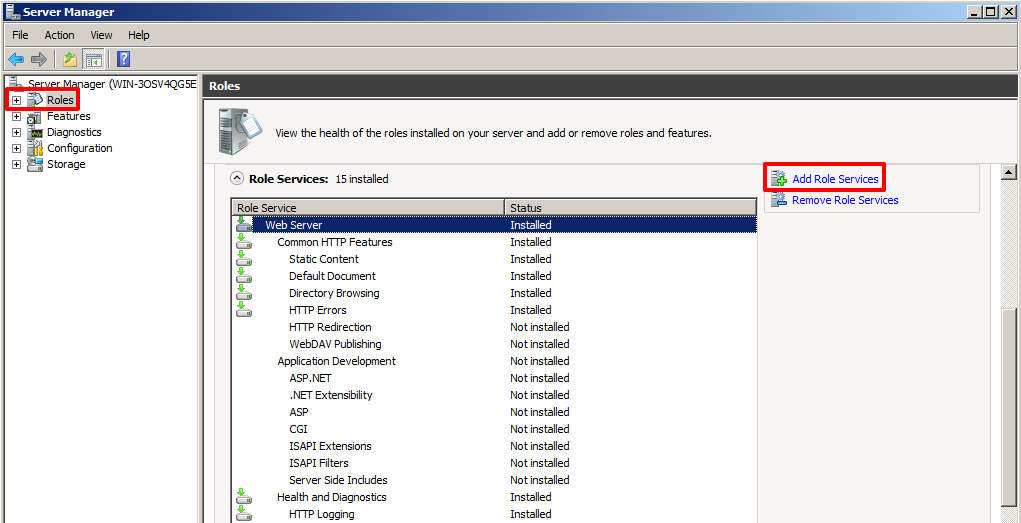
Installing Windows Features
Step 1
Begin by opening up Server Manager if it is not already running. To install the required Windows features, select the Features node from the left pane in the Server Manager tree. The main Features pane should list all of the currently installed features. The following is a list of required features:
- .Net Framework 3.5.1 Features
- .Net Framework 3.5.1
- WCF Activation
- Non-HTTP Activation
- Remote Server Administration Tools
- Role Administration Tools
- Web Server (IIS) Tools
- Windows Process Activation Service
- Process Model
- .Net Environment
- Configuration API’s
Some of these will likely be missing. Click on Add Features to make begin adding the missing features.

Configuring Windows Security Policies
Step 1
Begin by launching the Local Security Policy tool through the Windows Start menu and selecting Administrative Tools > Local Security Policy.
